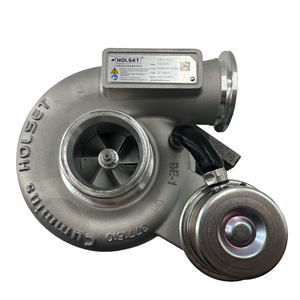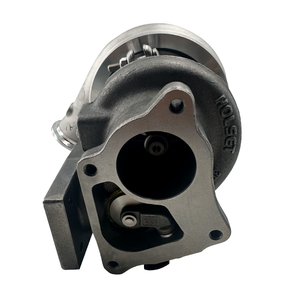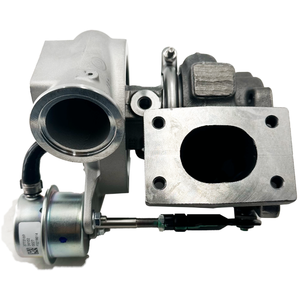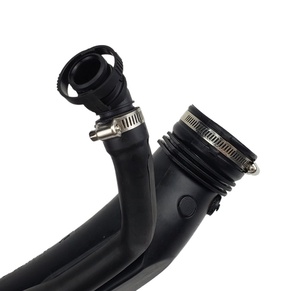
All categories
Featured selections
Trade Assurance
Buyer Central
Help Center
Get the app
Become a supplier

(1960 products available)



















































When looking for a suitable turbocharger for Citroen C4, it's vital to explore the different types available, as each offers unique benefits that may suit various needs and preferences. Turbochargers make use of exhaust gases to spin a turbine connected to a compressor. The compressor draws in air and forces it into the engine's cylinders, resulting in more power and efficiency. Here are some common types of turbochargers:
Single Turbo
Single turbos are the most traditional and widely used turbochargers. As the name suggests, a single turbo for Citroen C4 is equipped with one turbocharger. Typically, a single turbo setup is lightweight and more affordable than other alternatives. It also requires less maintenance. The reduced complexity makes it easier to diagnose and fix issues when they arise. That being said, single turbos may not outperform other alternatives when it comes to power delivery and responsiveness. They also generate a lot of heat, which can affect performance.
Variable Geometry Turbocharger
Variable geometry turbochargers (VGTs) are designed to enhance engine performance and efficiency, especially in diesel engines. VGTs automatically change the angle of the turbine blades in response to the flow rate of exhaust gases. This helps maintain optimal boost pressure across a wide RPM range. As a result, the engine becomes more responsive, and lag is significantly reduced. Furthermore, VGTs improve fuel efficiency and reduce emissions. The key downside of variable geometry turbochargers is that they are more complex and costly compared to other types of turbochargers.
Twin-scroll Turbocharger
Twin-scroll turbochargers are specifically designed to minimize turbo lag and maximize low-end torque. This is achieved by separating the exhaust pulses from paired cylinders into two scrolls within the turbine housing. Each scroll drives its turbine blade, leading to enhanced efficiency and quicker spool times. By optimizing the exhaust flow, twin-scroll turbochargers generate more boost at lower engine speeds. This results in improved performance and responsiveness, particularly in applications where low-end torque is crucial.
Electric Turbo Compounds
Electric turbo compounds (ETC) are a relatively new technology in the world of turbochargers. ETCs use electric motors to drive the compressor, allowing for precise control of boost levels. The primary purpose of electric turbo compounds is to eliminate turbo lag, as the electric motor can spin the compressor up to the desired speed almost instantly. Furthermore, ETCs can improve overall engine efficiency by recovering energy from the exhaust gases that would otherwise be wasted. The main drawback of electric turbo compounds is their high cost and complexity.
When buying a turbo for Citroen c4, it is important to check the specifications. The specifications give a clear picture of what the turbo can offer. Here are some of the key specifications to pay attention to.
Turbo Type:
There are different types of turbochargers. Each type uses a different mechanism to boost engine power. The most common types are twin-scroll and variable-geometry turbos. Variable-geometry turbos are suitable for small engines. They spin fast and generate boost quickly. This improves fuel efficiency. For a Citroen C4, a VGT turbo is the best option. It will improve the car's engine performance without any negative effects.
Max Power Output:
The purpose of a turbo is to improve engine performance. Therefore, check the power output of the turbo. The power output is usually measured in Horsepower (HP). For the Citroen C4, look for a turbo with a max power output of between 100 to 200 HP.
Max Torque Output:
Just like power output, torque output is an important specification to consider. Torque is what pushes the vehicle forward. The max torque output of the turbo should match the desired driving experience. If looking for a sporty feel, go for a turbo with high torque output. For the Citroen C4, the torque output should be between 200 to 300 Nm.
Material:
Turbos are made using different materials. The most common are stainless steel and cast iron. The material affects the durability and performance of the turbo. Stainless steel turbos last longer and give better performance. However, they are more expensive than cast iron turbos.
When installing a turbo for Citroen C4, proper maintenance is required. With the right care, the turbo will give many years of service. Here are some maintenance tips for the turbo:
Engine compatibility:
This is the first and most important factor to consider when replacing a turbo. The Citroen C4 came out with a variety of engines, including gasoline and diesel options. Make sure the turbocharger is designed to work with the specific engine version. For instance, the turbo specs for the PureTech petrol engines differ from those of the BlueHDi diesel engines.
Performance goals:
Determine how much extra power is desired from the turbocharged Citroen C4. A modest increase of 10-15% over stock is suitable for daily driving needs. But, more is required for weekend track use or tuning enthusiast projects. Keep in mind that heavily modifying the C4's performance can strain other components like the transmission, cooling, and brakes.
Turbo type and size:
Citation C4 Turbochargers come in several types, each with its pros and cons. The most common are:
1. Single-scroll turbos: Affordable and reliable, but not very efficient.
2. Twin-scroll turbos: Work well for petrol engines when seeking low lag and high power.
3. Variable-geometry turbos (VGT): Excellent choice for small-displacement diesel engines needing boost over a broad RPM range.
Additionally, turbos are classified as small, medium, or large based on wheel dimensions. A larger turbo generates more boost but has a slower spool time.
Quality and warranty:
Always choose turbochargers for the Citroen C4 from reputable brands. Those providing a solid warranty should be prioritized. Even though OEM parts last the longest, aftermarket options are becoming more reliable. Especially if they come from well-known manufacturers.
Budget:
When selecting a turbo for Citroen C4, budget constraints have to be considered. The cost of the turbo itself is not the only expense. Upgrades to the exhaust, intake, intercooler, engine tuning, and labor must also be factored in. Determine whether financing or other payment options are required.
Legal compliance:
Find out if the chosen turbo upgrade will meet local emissions and noise regulations. In most cases, OEM turbos are the safest legally compliant choice. Some aftermarket brands are street-legal, but others may lack the required certification.
Replacing a turbocharger on a Citroën C4 is a complex task that typically requires a good understanding of automotive mechanics. It is also essential to have the right tools and safety equipment. Here is a general guide on how to replace a turbocharger on a Citroën C4.
Tools and materials needed:
Step-by-Step Guide
Preparation
Disconnect the battery. Drain the engine oil and coolant. Raise the car and jack stands and remove the front wheels.
Remove the old turbocharger
Remove the air intake hose and the intercooler piping from the turbocharger. Disconnect the oil feed and return lines from the turbo. Remove the coolant lines from the turbo. Unbolt the turbo from the exhaust manifold and downpipe. Disconnect the wastegate actuator and unbolt the turbo from the exhaust manifold and downpipe.
Install the new turbocharger
Install the new turbo onto the exhaust manifold and downpipe. Reconnect the wastegate actuator. Connect the oil feed and return lines to the new turbo. Reconnect the coolant lines to the new turbo.
Reassemble
Reinstall the air intake hose and the intercooler piping. Lower the car and reconnect the battery. Refill the engine oil and coolant.
Start the engine and let it idle for a few minutes. Check for any oil or coolant leaks and ensure all connections are secure. Once satisfied, take the car for a short drive and recheck for leaks and proper turbo operation.
It's important to note that the exact steps may vary depending on the specific model and year of the Citroën C4, as well as the type of turbocharger equipped on the vehicle. Always refer to the service manual for the specific vehicle model for detailed instructions and torque specifications.
For those not experienced in automotive repair, it is recommended to have the turbocharger replaced by a professional mechanic.
Q1: How long does a turbo for Citroen C4 last?
A1: A new turbo can last between 100,000 to 200,000 miles. However, its longevity depends on several factors. These include the driving conditions, the quality of the turbo, and the maintenance practices.
Q2: What causes turbo failure in Citroen C4?
A2: Turbo failure can occur due to various reasons. This includes wear and tear, oil starvation, and damage from debris. Other causes include excessive heat, improper installation, and engine problems.
Q3: Can users upgrade their Citroen C4 turbos for better performance?
A3: Yes! It is possible to replace the existing turbo with a more powerful one. This leads to an increased airflow into the engine, thus improving its performance. However, consult a professional to ensure compatibility and proper installation.